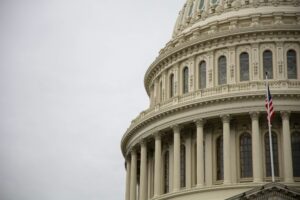by: Kathleen Kuznicki, Esq.
What is a trademark?
The legal definition of a trademark is a word, phrase, symbol, or design that identifies and distinguishes the source of goods and services. Most commonly we think of names and logos, but marks also include taglines, slogans, and even product shapes, sounds, smells, and colors.
What are the categories of marks?
Trademarks protect goods and service marks protect services. Both are treated the same legally. Use of the TM or the SM symbol indicates that a mark is not registered with the United States Patent and Trademark Office (USPTO), and should be used as soon you start identifying goods or services with your mark. Only after a mark has been federally registered can an owner use the circled R ® after their mark.
What are the types of marks?
- Design marks protect images and logos, word marks protect names, taglines, etc. and trade dress protects the design of things like packaging or buildings.
- What are the USPTO classifications for business names?
- Fanciful –coined words that have been invented, they are the easiest to register. (Kodak)
- Arbitrary-a known word used with products that are not usually not associated with the word (Apple for computer products)
- Suggestive-suggests something about the product or some quality of the product (Coppertone for suntan lotion)
- Descriptive-directly describes the product or the service you are performing. These are the hardest marks to register because you need to establish that your mark has acquired distinctiveness.
- Generic classification; these are marks that have lost their valid trademark status.
What does federally registering a trademark really protect?
Federally registering a trademark protects the brand of an individual, group, business, product, or service used in commerce (i.e. across state lines). Registration gives an owner the exclusive use of their mark nationwide in connection with the goods or services indicated in their application, and they can prevent anyone from subsequently using a “confusingly” similar mark. Registration gives an owner the legal presumption that their mark is valid and also gives the public constructive notice of the mark nationwide.
What are the risks of not federally registering a trademark?
There is no legal presumption of ownership or validity of the mark, and because there is no public notice, someone can imitate or even register a similar mark. Without registration an owner may be limited to using their mark only in their local area; quashing the expansion of the use of their mark and consequently hurting the expansion of their business.
What may happen if I don’t check to see if my mark is confusingly similar to another’s mark?
You risk infringing somebody else’s mark. You may receive a cease and desist letter which threatens a law suit unless you stop using your mark. If you apply to register for an unchecked mark, you may be rejected by the USPTO as being confusingly similar to another’s mark, even after making arguments as to why you are distinctive. Either of these scenarios may result in you having to change your mark, wasting all the hard work and money that you initially put into branding and incurring additional significant costs such as buying new letterhead, new shirts, new truck labeling, etc.
How do you evaluate whether a mark is confusingly similar to another’s mark?
Look to see:
- Whether a mark is similar in appearance, phonetic sound, or meaning to another mark.
- Whether or not the goods or services compete with or are similar to one another.
- Whether or not the goods or services are so closely related that they are marketed in a similar manner.
- How sophisticated the buyers are and how expensive the product is. This relates to how careful the consumer is likely to be when purchasing the goods or services. For example, people are more discerning when buying a car than when buying a pack of gum.
- Whether or not the companies have overlapping customer bases.
- Whether or not there has been any actual confusion. If so, this is not conclusive evidence of likelihood of confusion, but must be weighed together with the other factors.
Kathleen Kuznicki is a contributing writer to Exit Promise. Please visit www.exitpromise.com to view more articles by Kathleen.




